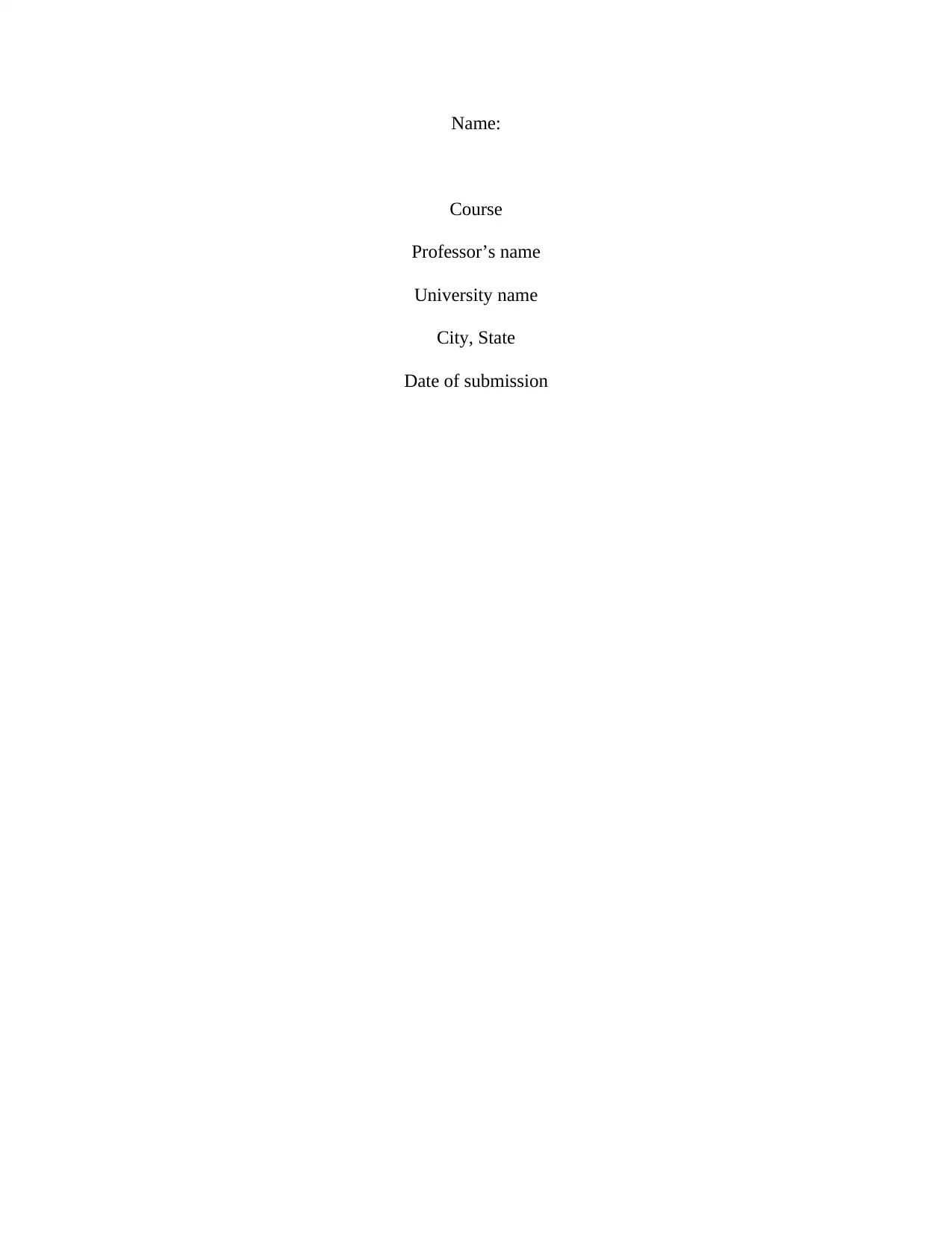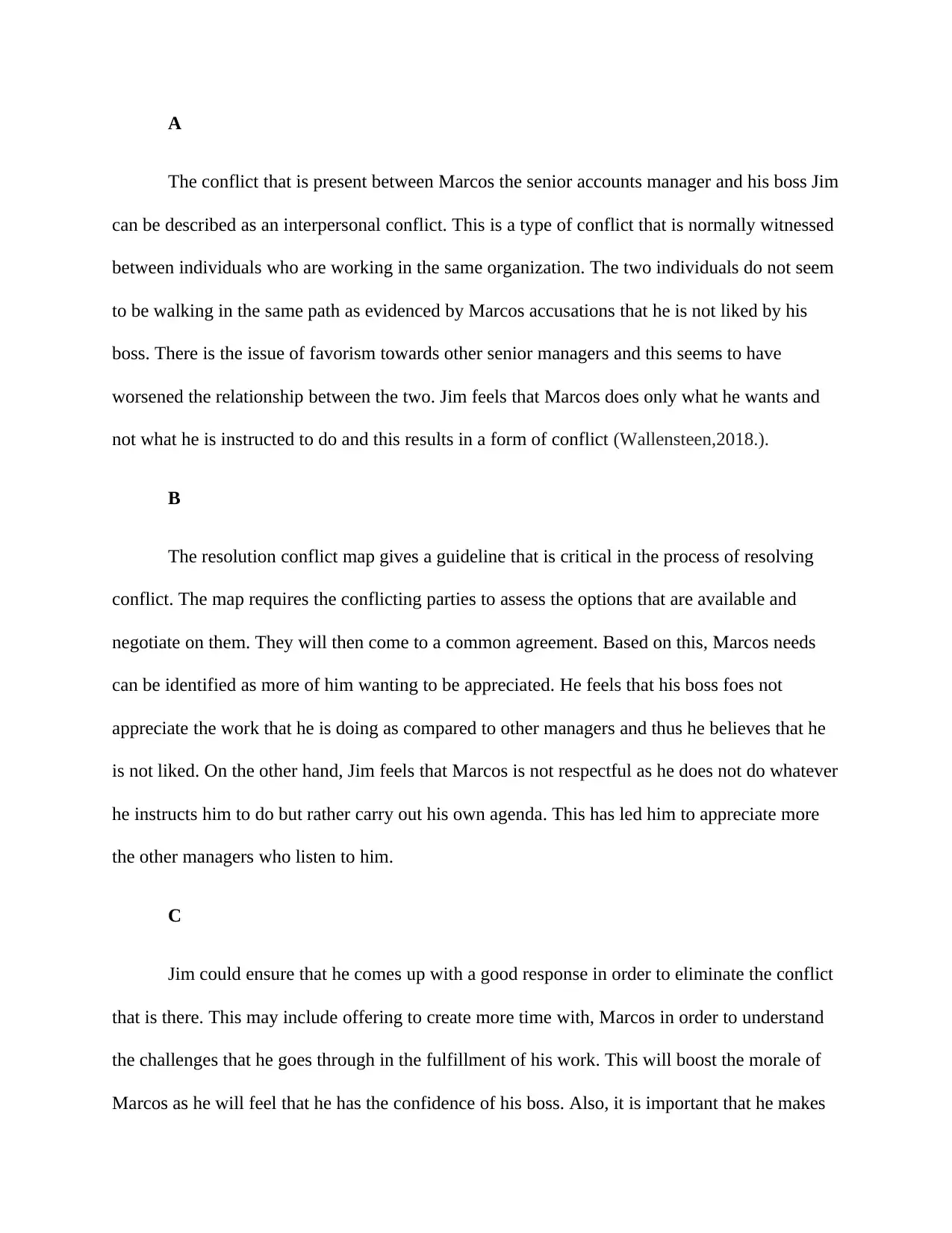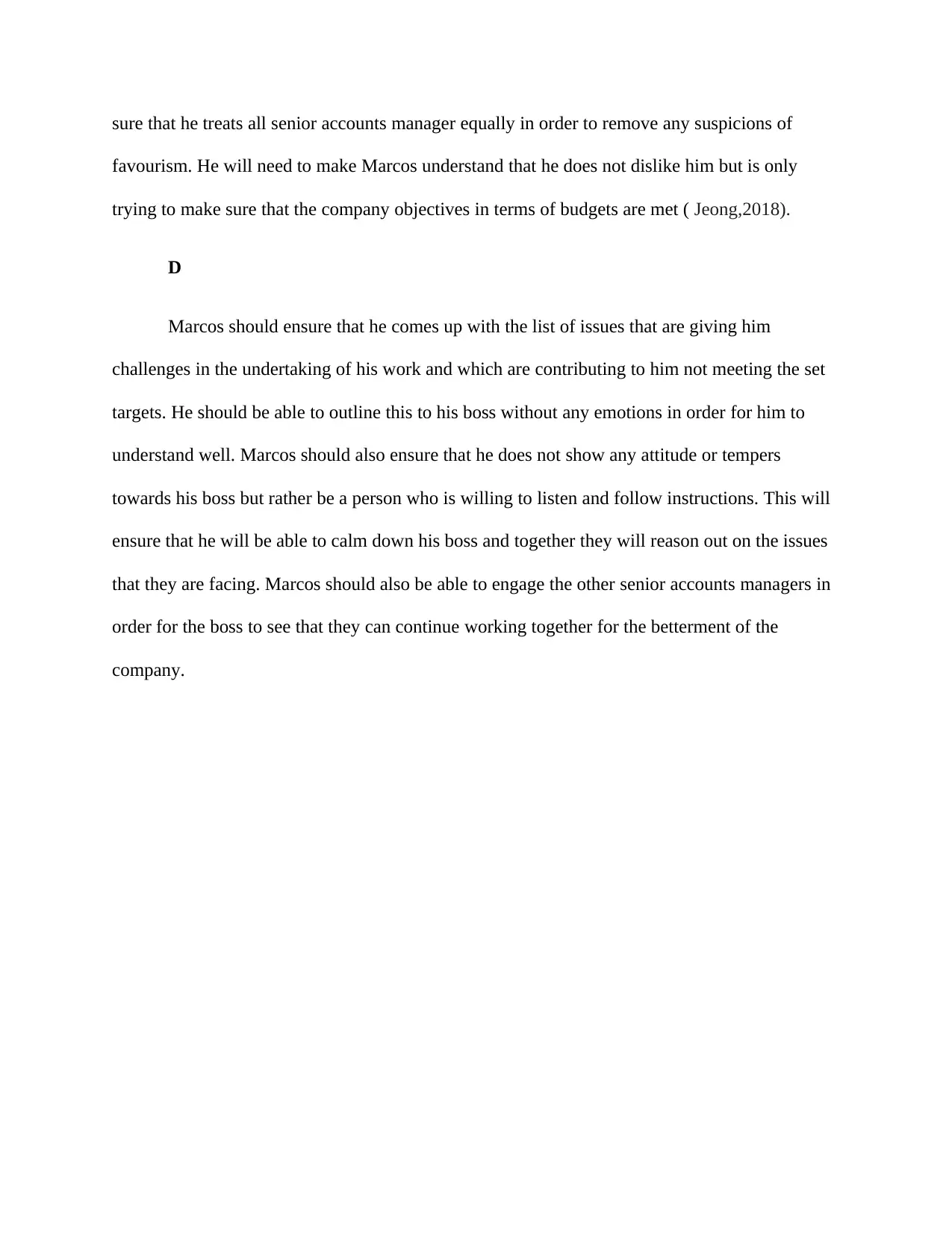University Case Study: Marcos and Jim Conflict Resolution Analysis
VerifiedAdded on 2022/09/22
|4
|585
|21
Case Study
AI Summary
This case study examines an interpersonal conflict between Marcos, a senior accounts manager, and his boss, Jim. The conflict stems from perceived favoritism, differing work approaches, and a lack of appreciation. Marcos feels undervalued and believes Jim favors other managers, while Jim is frustrated by Marcos's perceived insubordination. The analysis applies conflict resolution principles, identifying Marcos's need for recognition and Jim's need for adherence to instructions. The solution proposes that Jim should engage in open communication, treat all managers equally, and clarify expectations. Marcos is advised to articulate his challenges, maintain a professional demeanor, and collaborate with colleagues. This case study provides a practical framework for understanding and resolving workplace conflicts, emphasizing the importance of communication, fairness, and mutual respect in leadership.
1 out of 4










![[object Object]](/_next/static/media/star-bottom.7253800d.svg)